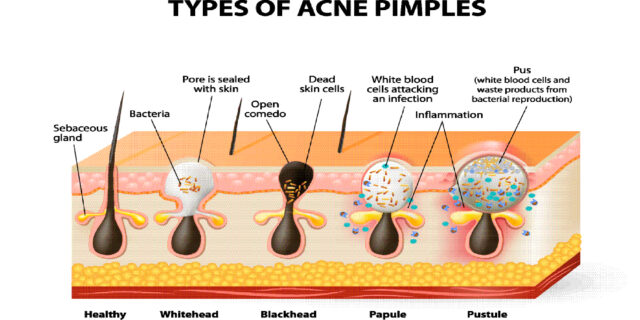Blackheads
Blackheads are formed when a hair follicle becomes clogged with oil and dead skin cells. This clogging causes the follicle to stretch and become wider, causing the top of the plug to become exposed to the air. The oil within the follicle oxidizes and turns black or brown in color, giving the appearance of a blackhead on the skin.
Whiteheads
Whiteheads are formed when a hair follicle becomes clogged with oil and dead skin cells, just like blackheads. However, unlike blackheads, the top of the plug remains covered by the skin, preventing the oil from oxidizing and turning black. As a result, whiteheads appear as small, raised, white or skin-colored bumps on the skin.
Topical Treatments
Topical treatments, such as creams and gels, can help to unclog the pores and reduce the formation of new blackheads and whiteheads. These treatments work by removing the excess oil and dead skin cells that contribute to the clogging of the hair follicles. Common treatments include benzoyl peroxide, salicylic acid, and retinoids.
Extraction
Extraction is a procedure performed by a dermatologist or esthetician to remove the contents of a blackhead or whitehead. The practitioner uses a small tool to gently apply pressure to the lesion, pushing the contents out. It should be done by professionals to prevent skin damage or scarring.
Microdermabrasion
Microdermabrasion and hydrafacial is a minimally invasive procedure to remove the top layer of dead skin cells. It unclogs the pores and reduces the formation of blackheads and whiteheads. It can be done in a dermatologist’s office or at home with a device.
Chemical Peels
Chemical peels are exfoliating treatments that use a chemical solution to remove dead skin cells. They unclog pores and prevent the formation of blackheads and whiteheads. They can vary in strength from mild to deep and are usually performed in a dermatologist’s office.


